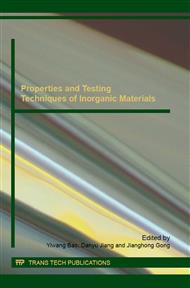p.352
p.361
p.365
p.370
p.378
p.382
p.388
p.392
p.398
Ultrasonic Prediction of 28-Day Compressive Strength of Crumb Rubber Concrete during early Age
Abstract:
Considering environmental protection, the application of waste tire is getting thorough and extensive. Basing on the previous research results, the variation principle of ultrasonic velocity and attenuation in concrete with age, the author carries out the application research on predicting 28-daycompressive strength of crumb rubber concrete during early age. Through the regression analysis between the 2-7days ultrasonic parameters (velocity v and/or attenuation A) and the 28-day compressive strength of crumb rubber concrete, it is found that the correlative coefficient is greater than 0.90 and the relative square deviation is less than 15%. So it is practically reasonable to predict 28-day compressive strength of crumb rubber concrete by pre-established regression curves.
Info:
Periodical:
Pages:
378-381
Citation:
Online since:
February 2016
Authors:
Keywords:
Price:
Сopyright:
© 2016 Trans Tech Publications Ltd. All Rights Reserved
Share:
Citation:


